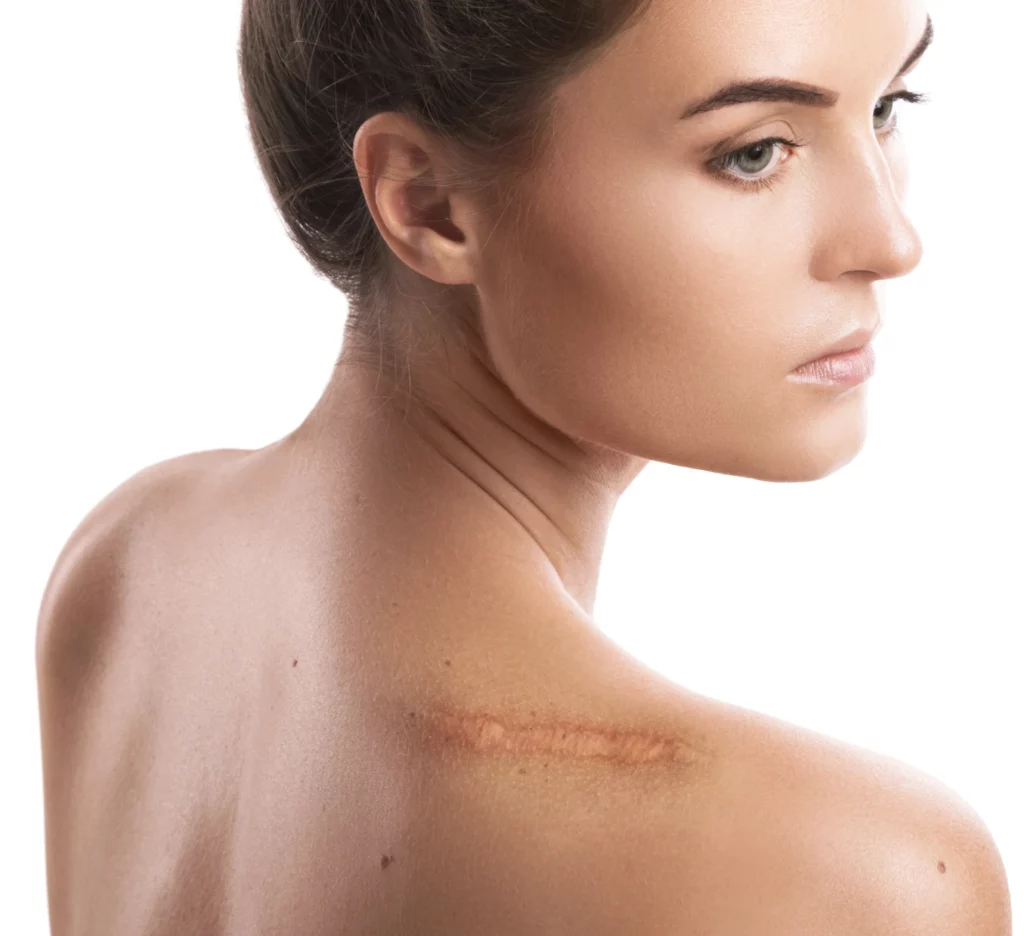Scar revision is a surgical procedure that improves the appearance of undesirable scars. It involves cutting out the scarred skin and rejoining the edges to make the scar less noticeable. The procedure is typically performed under local or general anesthesia and takes between 30 minutes to a few hours, depending on the size of the treated area. This reconstructive surgery aims to flatten the scars, blend them better with surrounding skin, and make them less noticeable. It is impossible to remove scars entirely, but a revision procedure can significantly improve their appearance.

Injury Scars: may vary widely in appearance, depending on the type of injury and the healing process.
Keloid Scars: emerge from excessive collagen production, creating raised bumps that exceed the original wound boundaries.
Acne Scars: can be pitted or elevated, depending on the type of abnormal healing after acne breakouts.
Hypertrophic Scars: painful and itchy formations that do not exceed the original wound boundaries.
If surgery is recommended, the patient undergoes a medical evaluation to ensure they are healthy enough for the procedure. They may need to stop taking certain medications or supplements beforehand that could interfere with anesthesia and healing. The patient is also given detailed pre-operative instructions to prepare for the day of surgery. Clear communication with Dr. Freeman helps set appropriate expectations regarding the improvement that can be achieved through scar revision.








